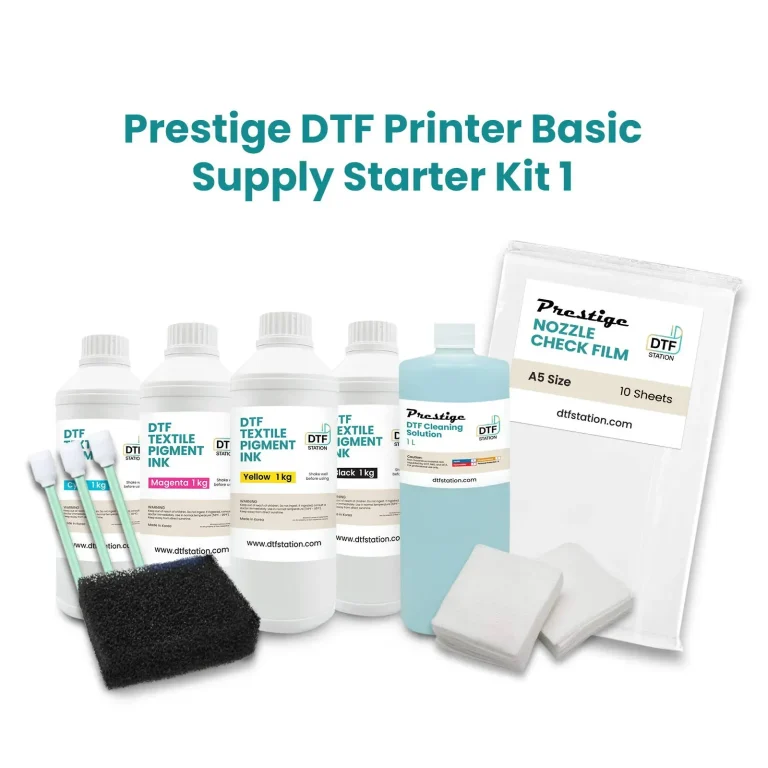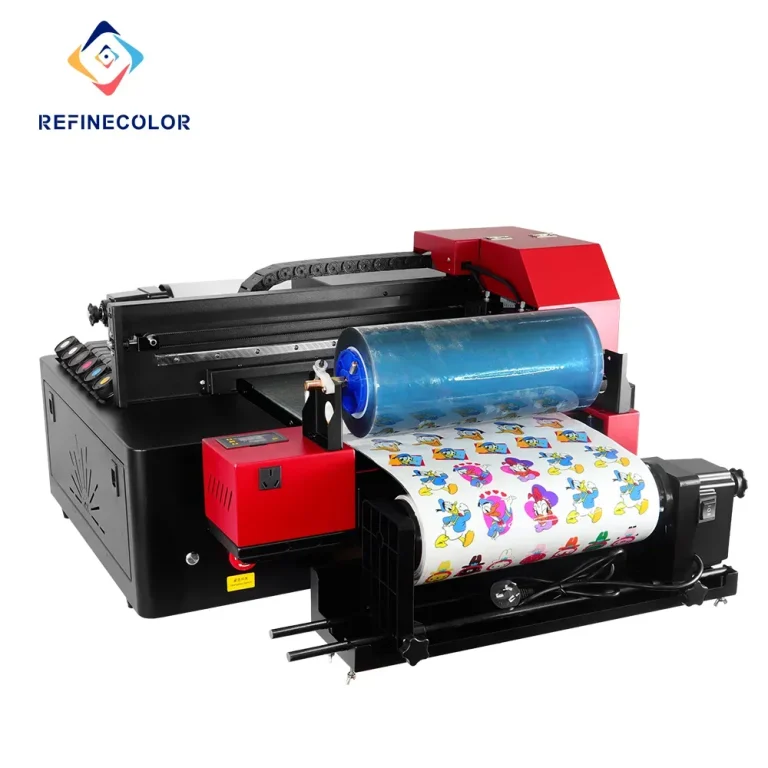UV DTF: Creative Applications in Modern Design Projects
In the world of modern design, UV Direct-to-Film (DTF) printing is emerging as a game-changer, offering unparalleled flexibility and vibrant color reproduction. This advanced UV printing technology allows designers to transfer intricate designs onto a variety of materials, making it a go-to solution for custom design applications across diverse industries. With its capability to provide high-definition clarity, UV DTF not only enhances the aesthetic appeal of products but also supports sustainable printing practices by minimizing waste. From textile printing to packaging solutions, UV DTF’s applications are vast and innovative, redefining how brands approach creative projects. Join us as we delve into the dynamic uses of UV DTF, showcasing how it transforms traditional design methods into modern marvels.
When discussing contemporary printing methods, terms such as UV print technology and Direct-to-Film printing frequently surface, often synonymous with innovation in design. These cutting-edge techniques are paving the way for unique custom design applications, blending artistry with efficiency. Within the realm of textile printing and beyond, these technologies promise to optimize material use while ensuring that designs pop with color and clarity. Focusing on sustainable printing solutions, they also cater to the growing demand for environmentally conscious choices in the industry. As we explore the practical applications and advantages of these modern methods, it becomes evident how they reshape creative possibilities for designers everywhere.
Understanding UV Direct-to-Film Printing Technology
UV Direct-to-Film (DTF) printing is a revolutionary method that has transformed how designers approach creative projects. By utilizing UV reactive inks that cure under ultraviolet light, this technology enables the production of stunning, high-quality prints with incredible detail and color richness. Unlike traditional printing techniques, UV DTF allows for versatility in substrates, meaning designers can apply this innovative printing method to a diverse array of materials, ranging from textiles to rigid surfaces like metal and glass. This adaptability makes UV DTF a popular choice among designers looking to push the boundaries of their work.
Furthermore, the efficiency of the UV DTF process is a significant factor in its growing popularity. It allows for short production runs with quick turnaround times, an essential feature in the fast-paced design industry. Designers benefit from the ability to create complex and personalized products without compromising quality. As demand for bespoke and unique items continues to grow, the UV DTF technology is positioning itself at the forefront of modern printing solutions, enabling creative professionals to bring their visions to life with ease.
Creative Uses of UV DTF in Fashion and Textiles
In the realm of fashion, UV DTF printing presents unmatched opportunities for customization. Designers are leveraging this technology to create bespoke apparel, providing consumers the chance to express their individuality through unique prints. From custom t-shirts to one-of-a-kind sneakers, the vibrant colors and intricate designs achievable through UV DTF elevate fashion items, making them not just clothing but wearable art. The ability to print on various textiles allows for flexibility in design, catering to different styles and trends in the ever-evolving fashion landscape.
Moreover, a growing number of brands are recognizing the potential of UV DTF to implement on-demand production systems. This approach not only minimizes waste but also aligns with consumers’ increasing demand for personalized fashion choices. By offering limited edition or customized items, brands can create a sense of exclusivity that appeals to modern buyers. Thus, UV DTF printing is not merely a technological advancement; it is a catalyst for a new era of personalized consumer experiences in the fashion industry.
The Impact of UV DTF on Home Decor
The applications of UV DTF extend beyond clothing, finding significant relevance in home decor. Designers are tapping into the technology to create personalized home furnishings, including custom wall art, furniture pieces, and unique decorative items. The durability and versatility of UV DTF allows creators to produce stunning designs on various substrates such as wood, glass, and metal, paving the way for beautiful, tailor-made home aesthetics that resonate with personal tastes.
Furthermore, as consumers increasingly seek to furnish their homes with distinctive pieces that tell a story, UV DTF provides the perfect solution. This technology empowers designers to explore creative avenues that reflect individuality and craftsmanship, offering bespoke items that elevate interiors. By combining artistic creativity with sustainable practices, UV DTF helps meet the growing consumer demand for environmentally friendly design, further enhancing its appeal in home decor markets.
Revolutionizing Packaging Solutions with UV DTF
The packaging industry is undergoing a transformation with UV DTF printing’s innovative capabilities. Brands are now able to incorporate eye-catching graphics and vibrant colors in their packaging, significantly enhancing the consumer’s unboxing experience. UV DTF allows for high-definition prints on various packaging materials, including boxes, bags, and labels, thus elevating branding efforts and creating a memorable first impression.
Additionally, the durability of UV DTF printed packaging ensures that products maintain their integrity throughout handling and transport. This reliability is crucial for brands striving to uphold their reputations while engaging consumers with visually appealing and functional packaging solutions. As sustainability continues to be a priority in business practices, the lower waste associated with UV DTF also appeals to brands looking to reduce their environmental impact and meet consumer expectations.
Sustainability and Eco-Friendly Practices in UV DTF
As environmental awareness rises, UV DTF technology stands out due to its sustainable printing capabilities. This method involves lower waste production compared to traditional printing techniques, which is vital in addressing ecological concerns in modern manufacturing. Moreover, many UV DTF printers are incorporating environments-friendly inks and processes, ensuring that the entire production lifecycle aligns with sustainability goals.
The integration of eco-conscious practices in UV DTF production not only meets consumer demand for green solutions but also encourages designers and manufacturers to adopt more responsible methods. By choosing UV DTF, businesses can significantly reduce their environmental footprint while still providing high-quality, customizable products. This commitment to sustainability is indicative of the industry’s future trajectory, where eco-friendly approaches are becoming increasingly fundamental to operational success.
The Future of UV DTF Printing in Various Industries
The future of UV DTF printing appears bright, as this technology continues to influence various industries. The rising consumer demand for personalized products is fueling growth, prompting businesses to invest in UV DTF capabilities to allow seamless on-demand printing services. This technological advancement is expected to expand the scope of creative possibilities, ensuring designers can meet evolving market trends with agility.
Additionally, as more companies recognize the benefits of UV DTF—such as its cost-effectiveness for short runs and its capacity to deliver custom designs—it is anticipated that its adoption will accelerate. This shift will pave the way for fresh innovations, creating new opportunities for designers to leverage UV DTF technology in crafting unique, consumer-focused products across multiple sectors, from fashion to home goods and beyond.
Frequently Asked Questions
What is UV DTF printing and how does it work?
UV Direct-to-Film (DTF) printing is a modern technology that transfers designs onto a film using UV reactive inks that cure under UV light. This method allows for high-definition, vibrant prints on various materials, making it ideal for creative applications in fashion, home decor, and more.
What are the key advantages of using UV Direct-to-Film in textile printing?
The primary advantages of UV DTF in textile printing include the ability to produce intricate designs with exceptional clarity and color vibrancy. It also allows printing on diverse fabrics, enabling custom apparel production and rapid responses to consumer trends, all while minimizing waste and using eco-friendly practices.
Can UV DTF technology be used for packaging solutions?
Yes, UV DTF technology is transforming the packaging industry by enabling the production of eye-catching graphics on various packaging materials such as boxes, bags, and labels. Its durable prints ensure that packaging maintains quality throughout handling, providing memorable consumer experiences.
What industries are benefiting from UV printing technology?
UV printing technology, particularly UV DTF, is benefiting numerous industries including fashion for custom apparel, home decor for unique decor items, and packaging for enhanced consumer engagement, driven by the trend of personalization and sustainability.
Is UV DTF printing environmentally friendly?
UV DTF printing is considered more environmentally friendly than traditional printing methods, as it typically generates lower waste and incorporates minimal harmful chemicals. Many manufacturers also use eco-friendly inks and sustainable practices, aligning with the growing consumer preference for environmentally responsible products.
How does UV DTF enhance creative design applications?
UV DTF enhances creative design applications by allowing designers to print on a wide array of substrates, from textiles to rigid materials like wood and metal. This versatility opens up limitless creative possibilities, making it an invaluable tool for modern designers looking to produce high-quality, customized products.
| Key Point | Description |
|---|---|
| UV DTF Technology Overview | Combines UV printing and DTF techniques for vibrant prints on various materials. |
| Innovative Applications | Used in fashion for custom apparel, in home decor for unique items, and in packaging for memorable designs. |
| Environmental Considerations | Lower waste and eco-friendly inks make UV DTF a sustainable option in printing. |
| Market Trends | Rising demand for personalization fuels growth in UV DTF applications across industries. |
| Fashion Case Studies | Case studies show UV DTF’s flexibility and cost-effectiveness for small runs in fashion. |
Summary
UV DTF technology offers a revolutionary approach to modern design projects, enabling designers to create highly customized and vibrant prints across diverse materials. As industries increasingly adopt UV Direct-to-Film printing, its applications in fashion, home decor, and packaging are expanding, providing a canvas for creativity while also aligning with eco-conscious practices. This combination of artistic freedom and technological advancement not only enhances product appeal but also caters to a growing consumer preference for personalization. The future of UV DTF is bright, paving the way for innovative design solutions that resonate deeply with consumers.







